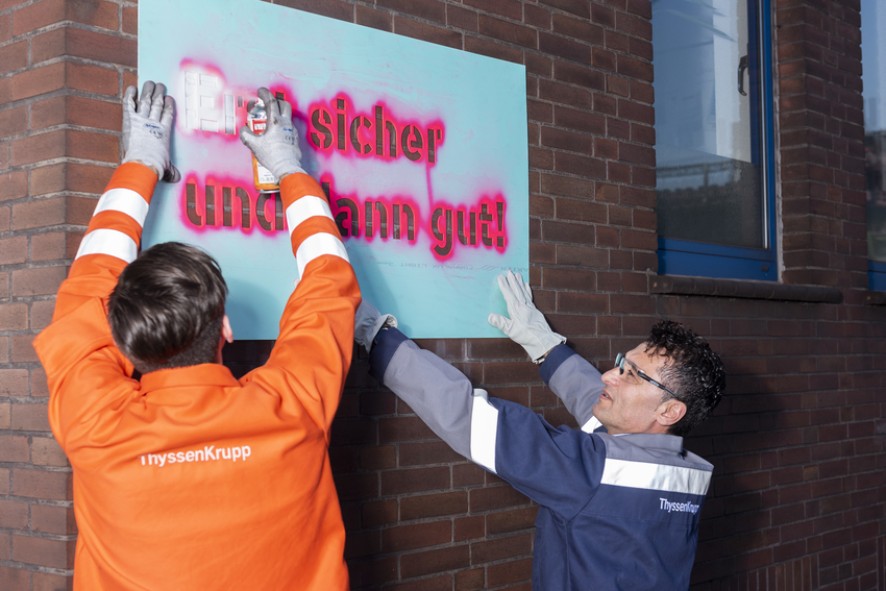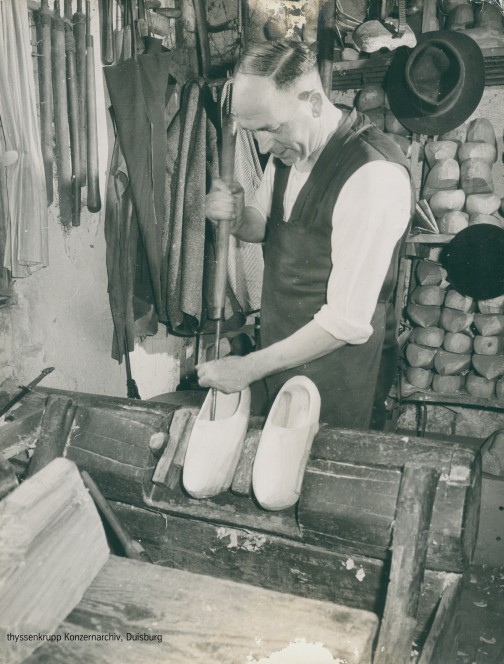Daily press, 2020-04-28, 02:30 pm
Works agreement signed 60 years ago: despite coronavirus, occupational safety is still top priority for thyssenkrupp Steel

Source: thyssenkrupp Steel
The coronavirus is currently dominating working life. Many employees are working from home, but this is not possible for everyone. For example, employees whose job is to keep production running continue to come into their usual workplace every day and must comply with the hygiene rules there. “The coronavirus is affecting our daily lives in a way never seen before. But even though the new hygiene measures demand our attention and must be implemented, occupational safety is still our top priority,” says Markus Grolms, labor director and CHRO at thyssenkrupp Steel. Occupational safety has a long history at thyssenkrupp Steel. 60 years ago the executive board and works council of August Thyssen-Hütte AG signed a works agreement making it compulsory for all production workers to wear safety shoes. Until then blast furnace workers had only worn wooden clogs. And there have been a lot of other advances in occupational safety at thyssenkrupp Steel since then.

From wooden clogs to safety shoes
The clogs at the blast furnace had been around since the 1920s. But they weren’t really safe - the number of foot injuries was high. The company finally took action and by works agreement of April 19, 1960 made the wearing of safety shoes compulsory everywhere in production. Initially the workers said the new safety shoes were heavy and uncomfortable, and that clogs could be removed much faster than safety shoes if you stepped on hot iron. Gradually, however, safety shoes became established as one of the most important tools of occupational safety. In their modern form, steel toecap safety shoes are still compulsory today, alongside hard hats, face shields and fire-resistant coats – and not just at the blast furnace.

Source: thyssenkrupp Konzernarchiv, Duisburg
Goal: a culture of occupational safety
“First safe, then good” is the motto of the safety culture program which has been displayed at roadsides and on walls at thyssenkrupp Steel since the program was launched in 2018. Protecting employee health is of utmost importance to the company, and in the long term the aim is not just to advance occupational safety technically and organizationally but to live a culture of safety. “For many years we have been raising awareness among managers and employees of the importance of safety and health through various training courses and campaigns - and we are seeing significant progress in dealing with occupational safety,” says Beatrice Schenuit, senior safety engineer at thyssenkrupp Steel. “Being able to communicate openly and a culture in which we can learn from mistakes are essential for a functioning safety culture.” That’s why employees are actively involved in further developments of the safety culture: Ideas are additionally tested for their practicality and only implemented after employee feedback.




